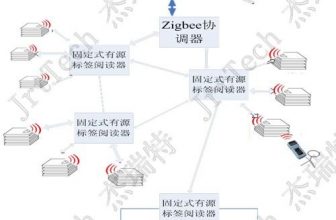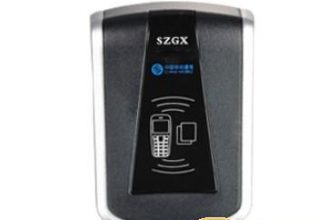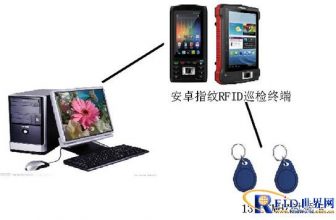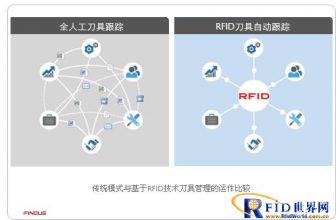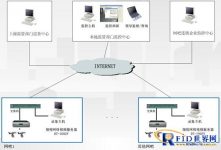
Remote centralized monitoring system solution for chain Internet cafes
[ad_1]

I. Overview
According to authoritative statistics, there are currently 125,000 operating Internet cafes nationwide. With the continuous increase in the number of Internet cafes in my country, some problems such as operating owners indulging underage children to enter Internet cafes for profit-making purposes, as well as some illegal and criminal phenomena such as using Internet cafes as bases to implement extortion, have been reported throughout the country. The spreading trend has even seen vicious incidents such as the arson case of Beijing’s “Blue Speed” Internet cafes. How to effectively strengthen the supervision and management of the business activities of various Internet cafes and prevent problems before they are burned has become a top priority for relevant departments such as culture and ***.
On the other hand, according to the regulations of the Ministry of Culture, in order to further regulate the Internet cafe market, most of the existing Internet cafes must join the major licensed chain operation systems within three years. As for the large-scale licensed chain Internet cafes, once any of its chain Internet cafes violates regulations and laws, it will have an immeasurable negative impact on their brands. Therefore, in addition to strengthening the approval threshold for chain access and regulating the system, it is also indispensable for the business entity to strengthen the daily supervision and management of its chain Internet cafes.
Therefore, the relevant competent departments of culture, ***, and various licensed large-scale brand chain Internet cafes management agencies, through the implementation of remote image real-time centralized monitoring and management of scattered Internet cafes, can not only discover and investigate and punish the operations of Internet cafes in a timely manner. Violations and violations of laws and regulations, and can play a great deterrent effect on potential implementers of violations and laws.
2. Introduction to the remote centralized monitoring system for chain Internet cafes
The remote centralized monitoring system for chain Internet cafes is the latest international network-based third-generation all-digital video monitoring system. It completely overcomes the shortcomings of traditional analog monitoring systems and is superior in function and performance. This system mainly uses the latest computer processing technology to encode and compress the video image signal obtained by the surveillance camera of the front-end Internet cafe into a digital signal and transmit it to the monitoring center of the cultural inspection brigade, the industry management office of the Ministry of Foreign Affairs and other departments or chain Internet cafes through the network. In the monitoring center, the digital signal is restored to a video signal in the monitoring center and displayed on the computer.
Since the Internet cafe itself has a high-bandwidth Internet access environment, the remote centralized monitoring system for chain Internet cafes can make full use of the existing network and equipment resources of the Internet cafe, saving users’ investment. Moreover, the functional mode of “superior remote real-time monitoring, local real-time recording in Internet cafes, and superior remote viewing of recordings at any time” fully meets the needs of practical applications.
The core equipment of the remote centralized monitoring system of chain Internet cafes includes DT1000 series network video server hardware equipment and supporting network video centralized monitoring system management software. The former is installed in Internet cafes and mainly performs the function of encoding and compressing the video images captured by the camera into IP data packets and uploading to the network; the latter is installed on the monitoring computer of the monitoring center of the supervision department, mainly performing the restoration of data into video signals and a series of The control, recording, and management functions of the device.
The DT1000 series of network video servers are independently developed and produced by Guangzhou Dete Information Technology Co., Ltd., with digital compression and network transmission technology as the core, using the most advanced video digitization technology (MPEG-4), in line with industrial standards and adapting to the needs of Chinese customers IP network video surveillance products. This product can fully meet the needs of customers for remote video surveillance, and in terms of technical performance, it embodies the two major trends of digitalization and networking in the current video surveillance field. It has the distinctive characteristics of high reliability and high integration, and can be widely used in applications such as Remote video monitoring of unmanned electric power substations, telecommunications equipment rooms, banks, road traffic, schools, ***, chain business sites, and local local area network monitoring. The DT1000 series of network video servers passed the inspection by the Ministry of Security and Alarm System Product Quality Supervision, Inspection and Testing Center in April 2003 (public Shanghai inspection: 031367), and the network video centralized monitoring system management software was issued by the Guangdong Provincial Department of Information Industry. Product registration certificate (Guangdong DGY-2002-0578).
The remote centralized monitoring system of chain Internet cafes can achieve the following functions:
(1) Remote Internet cafe inspections
The management personnel of the monitoring center can remotely monitor the real-time operation status of any chain Internet cafe through the networked computer at any time and save the video when needed. They can also send control instructions to the front end through the computer to adjust the focus of the Internet cafe camera or PTZ to facilitate local detailed observation. Through remote monitoring, while supervising whether the Internet cafes are operating in a standard manner, it is guaranteed that Internet cafes can surf the Internet normally and safely; by monitoring video data, it provides a basis for penalizing Internet cafe operators who violate regulations.
(2) Local recording
Internet cafes save local surveillance video data for a certain period of time in accordance with the requirements of the superior authority (you can use an existing ordinary computer as the video host to save the local image data.), so as to be the superior authority and the owner of the Internet cafe Provide effective basis for post-event analysis of emergencies. Moreover, there is no need to purchase any additional equipment. Internet cafe operators can use any local computer to watch real-time monitoring images of the scene.
(3) Intelligent retrieval, playback and storage of remote online video materials
Using domestic unique streaming forwarding technology, the management personnel of the monitoring center can remotely access the recording hosts of various Internet cafes at any time, and can perform intelligent quick retrieval and playback display of recording materials according to factors such as time, Internet cafe name, and camera number. In the case of, you can also transcribe the relevant video data to the computer hard disk of the monitoring center, thus avoiding the high investment of the monitoring center to set up a huge video storage server.
(4) Flexible multi-user, multi-level monitoring mode
Cultural, *** and other regulatory departments and Internet cafe management departments can share system resources without duplication of construction, and each implement remote monitoring or video calling and playback functions on licensed Internet cafes within the scope of authorization.
(5) Unlimited seamless expansion capabilities
In response to the increase in the number of surveillance Internet cafes in the system, the superior surveillance center does not need to add any equipment, but only needs to add corresponding network video servers and camera equipment in the newly-added surveillance Internet cafes. A simple structure can form a huge surveillance network system.
(6) High security
Image mask technology to prevent illegal tampering with video data; authorized hierarchical management, system login and operation are all authorized to check; powerful log management function.
(7) Online roadshow
The system is open to any user (within the scope of the regulatory authority). Any authorized Internet user can log in to watch the situation of the Internet cafe. Internet cafe owners can use this system to fully demonstrate their business environment to the outside world.
3. Basis and guiding ideology of system design plan
(1) Design basis
Mainly based on the actual needs of Internet cafe monitoring applications, as well as the actual experience in the process of multiple applications of this product, the overall construction goals, system functions, and technical performance indicators proposed in the technical parts of the bidding documents. The design should focus on the “Industrial TV System “Engineering Design Specifications”, “MPEG4 Video and Audio Codec Standard-Coding of Audiovisual Objects (6 Parts)”, “100BASE-TX Fast Ethernet Interface Standard”, “TV Monitoring Project Procedures and Requirements” and other standards.
(2) Design guiding ideology
The solution is to meet the actual application as the starting point, while ensuring the effect of the system, try to use the existing resources and equipment of the Internet cafe to minimize the cost of the system in terms of video transmission. At the same time, the system should have complete functions, high stability, and low maintenance. , Flexible scalability and other features.
Fourth, the system network structure
The remote centralized monitoring system of chain Internet cafes does not have a limit on the number of Internet cafes included in the monitoring range, mainly depending on the network conditions of the application environment. Therefore, basically the system scale can be freely combined and defined according to the number of Internet cafes that need to be monitored. At the same time, the system can form a large-scale remote centralized monitoring network in a multi-level networking mode.
According to the application characteristics and management mode of the Internet cafe industry, its Internet cafe monitoring system is basically a secondary network structure mode of the inspection center of the supervision department (Internet cafe chain enterprise monitoring center) and the front-end Internet cafe local video recording system. The system is equipped with one or more DT1000 series network video servers in each Internet cafe (the specific number depends on the number of surveillance cameras in each Internet cafe), completes the digital encoding and compression processing of the video signal and saves it in the local recording host, and packs it into an IP data packet Upload network. The inspection center of the supervision department (Internet cafe chain enterprise monitoring center) monitors the host computer through the Internet access through IP addressing to establish a connection with each Internet cafe, receive the video information uploaded by the front-end network video server of each Internet cafe and conduct it through the “network video centralized monitoring system management software” For remote real-time monitoring, you can also access the recording hosts of remote Internet cafes to replay and save the original recording data.
Five, system composition and configuration requirements of each part
As mentioned earlier, according to the application characteristics and management mode of Internet cafe monitoring, the remote centralized monitoring system for chain Internet cafes is basically the inspection center of the supervision department (or Internet cafe chain enterprise monitoring center) and the front-end Internet cafe local video recording system.
Among them, the inspection center of the supervision department (or the monitoring center of the Internet cafe chain enterprise) mainly includes the monitoring management host, display equipment, video data storage equipment and network video centralized monitoring system application software. The local video recording system of the front-end Internet cafe includes cameras and accessories, network video servers, etc.
The video image signals collected by surveillance cameras (such as the image signals of the entrances and exits of Internet cafes, registration desks, halls and other important locations) are compressed and encoded by the network video server and uploaded to the monitoring center through the network to complete real-time monitoring and grasp the situation of the Internet cafe. The monitoring center can implement functions such as management of the monitoring equipment of the Internet cafe, query of alarm information, image browsing and control.
Taking into account the characteristics of Internet cafe monitoring system construction, the remote centralized monitoring system of chain Internet cafes has good scalability. Each functional part adopts a modular structure, which is very easy to expand, convenient to network, flexible in configuration, and has a good user interface.
(1) When a new Internet cafe monitoring point is added to the system, it is only necessary to connect the Internet cafe network video server to the network and do a simple configuration in the center;
(2) The functions and operating status of the system are not affected by the expansion;
(3) The system has multi-level networking capabilities and even establishes a provincial and even nationwide Internet cafe monitoring network.
1. Front-end Internet cafe monitoring part
Some of the front-end equipment of Internet cafe monitoring is installed on the Internet cafe site to complete the collection, processing, and upload of various video image signals on the Internet cafe site. It can be divided into two parts: network video server and peripheral monitoring equipment. The configuration and requirements of each part are as follows:
The network video server is the core equipment of the remote centralized monitoring system for chain Internet cafes. The main functions include:
(1) Collect the video image signal of each Internet cafe site, and upload it to the inspection center of the supervision department (or the Internet cafe chain enterprise monitoring center) after compression and encoding;
(2) When necessary, through the on-site connection ***, according to the command issued by the monitoring center operation to control video switching, control lens focus, close-range/distant-range, iris adjustment, control the up and down, left and right and automatic patrol actions of the pan/tilt;
(3) If the system is equipped with alarm equipment, it can realize the linkage video recording function of police and vision according to the alarm information sent by the alarm equipment, automatically start the alarm lighting, alarm bell and other controlled equipment, and automatically explain the alarm with subtitles, sound and light prompts. Realize the anti-theft alarm function in a certain area.
As the actual monitoring environment of each Internet cafe is different, the types, composition and organizational structure of peripheral monitoring equipment, especially the arrangement of camera points and the number of types of cameras, have certain differences. Generally speaking, the configuration should be based on the principle of meeting the basic goals and requirements of image monitoring. . Peripheral monitoring equipment mainly includes color cameras or black-and-white cameras, as well as supporting pan/tilts, protective covers, brackets, and pan-tilt mirrors. Voice devices such as alarm detectors, microphones, speakers, etc. can also be configured according to actual needs. The general requirements are as follows:
①Color camera, light sensitivity value <2Lux, clarity>470 lines.
②Black and white camera, light sensitivity value <0.5Lux, definition>400 lines, backlight compensation function.
③ The pan/tilt, protective cover, bracket, and indoor pan/tilt, protective cover, and bracket are required to have anti-rust and anti-corrosion functions.
④The cloud mirror***, with RS485/232 interface, is connected to the network video server transparent channel through the network cable, and is directly controlled by the network video server. According to the predetermined procedure or the operation instructions of the monitoring center staff, the control Control of control objects such as lenses.
2. Inspection Center of Supervisory Department (or Monitoring Center of Internet Cafe Chain Enterprise)
The concept of the inspection center includes the inspection center of the superior supervisory authority and the inspection center of the local supervisory authority. The inspection center of the superior supervision department manages and monitors the inspection center of the supervision department in the way of authority management. Its function is basically the same as that of the local monitoring center, but the scope of the management area is more extensive, so the local inspection center is taken as an example here. .
The basic function of the local inspection center is to complete the real-time display, control, storage, management and other functions of the monitored images of the Internet cafes under its jurisdiction. Its hardware system is mainly composed of monitoring hosts, display devices, network interface devices, storage and printing devices, and its core is ” Network video centralized monitoring system management software”.
The monitoring host of the monitoring center installs Windows operating system and network video centralized monitoring system management software, and is equipped with large-capacity hard disks or external storage devices as needed. The host hardware requires a P42G or higher CPU, 256M or more memory, and a computer with 32M video memory and graphics card. The monitoring host, as the system operation platform of the monitoring center, is mainly responsible for receiving, storing, analyzing, counting and querying the video, alarm, and data signals uploaded by remote Internet cafes, while performing powerful system management functions, including managing system users and setting user permissions , Manage and configure system equipment, perform linkage processing on alarm information, manage network users and network equipment as a network server, and so on. And all these functions are implemented with the network video centralized monitoring system management software as the core.
Six, system application advantages and characteristics
The remote centralized monitoring system of chain Internet cafes is not only powerful, but also superior in performance to conventional video monitoring systems. The advantages of this system are mainly manifested in the following aspects:
(1) Function integration, making full use of Internet cafes network resources
This system utilizes the advanced nature of modern computer network technology to integrate multiple functions without the need for time-consuming and laborious laying of complex transmission lines. It not only makes full use of the high-speed and accurate advantages of high-bandwidth Internet, but also easily integrates various service requirements. Improved advanced nature and economy.
(2) Support multi-industry supervision and control
The system supports the supervision and control of multi-industry management departments, such as police, fire protection, cultural departments, and Internet cafes’ own superior institutions. Real-time monitoring, follow-up investigations can be carried out at any time, and all Internet cafes can be inspected one by one at the same time, so that managers of various industry management departments can understand everything without leaving home, thereby saving a lot of manpower, material resources and funds Expenses freed many department managers from the complicated management work.
(3) High scalability
The modular design can smoothly realize the expansion of the Internet cafe, the expansion of the center and the expansion of the sub-controller. Both single-stage expansion and multi-stage expansion can make full use of early-stage resources and reduce the investment cost of expansion. The expansion of the system only needs to add network video server hardware equipment at the front end or add computer equipment at the monitoring center without any complicated process, so that it can achieve a truly high degree of scalability.
(4) Simplification of maintenance
Conventional solutions generally use multiple systems and various complex equipment collections, and their maintenance requires different professionals. This system is based on the network and uses computer system processing technology. Due to the powerful network function of the system, remote operation and maintenance can be implemented, which simplifies system maintenance and reduces subsequent maintenance costs.
(5) Excellent image quality
Using advanced MPEG-4 encoding and decoding technology, the image is clear and natural. The standard resolution is 352×288 pixels, up to 704×576 pixels, and can be customized. The image has no flicker and good continuity. The standard image frame rate is 25 frames per second (PAL format) and 30 frames per second (NTSC format). Especially suitable for the application of detailed observation of Internet cafes.
(6) Low bandwidth occupation
Adopting unique adaptive P-frame and B-frame compression technology to further strengthen the compression ratio of the MPEG-4 compression algorithm. With the IP multicast function, it greatly reduces the network bandwidth occupied when viewing images. When transmitting images at 25 frames per second and a resolution of 352×288 pixels, the average occupied bandwidth is only 250kbps, which increases the number of video channels that users can transmit under the same network conditions by several times, which invisibly saves users’ network resources Invest.
(7) Low latency
MPEG-4 strengthens standard coding technology, and the remote video transmission delay is less than one second, which greatly improves the effect of remote real-time monitoring.
(8) Remote real-time monitoring video without *** location
The unique streaming technology breaks through the limitations of the traditional digital monitoring method (Note: The traditional digital monitoring method uses a hard disk video recorder or an industrial computer plus a video compression card as the station-side video processing unit. Although it is better than analog monitoring, it cannot Upload the compressed video signals of multiple channels to the monitoring center at the same time.), remote real-time monitoring and recording of images at multiple monitoring locations can be implemented at the same time.
(9) Flexible system structure
It adopts standard networking mode, supports IP unicast and multicast functions, and can set up multiple sub-control image workstations on the network to meet the needs of multiple users. It can also be used to form a multi-level monitoring system in WEB mode.
(10) Ease of operation
The operating platform of the monitoring center network video centralized monitoring system management software is WindowsNT/2000 Chinese version, the control interface is graphical, and the interface and menu are all in Chinese. Users can quickly become familiar with the use of the operating software.
(11) Independent development
The core hardware equipment and management software of the system are independently developed, which can provide good after-sales service in a timely manner, respond to the special needs of users, and tailor the functions according to the requirements of users.
[ad_2]



